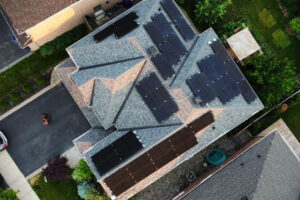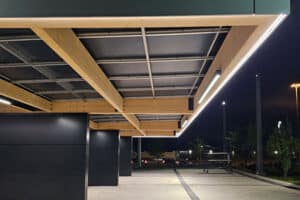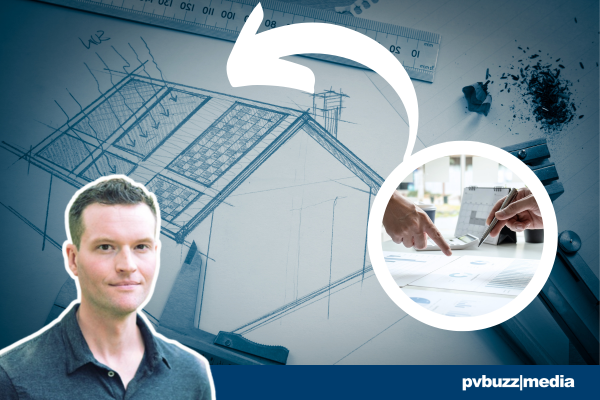Most homeowners and commercial clients aim to invest in a system that gets them as close as possible to 100% of their current power consumption.
However, achieving this goal is not without its challenges. What happens if your solar system produces excess power and your area doesn’t accept it back to the grid with net metering? Or if your system is too small, requiring costly upgrades down the road? Both scenarios can create new headaches for the future if your solar system is not sized correctly from the start. Designing the biggest possible solar system involves many intricacies and considerations.
Incorrectly sizing a solar system can lead to several significant issues. First off, if the system is oversized and produces more electricity than needed, without a net metering policy in place, excess energy can go unused. This leads to inefficiencies and results in financial losses as the initial investment becomes harder to recoup.
Conversely, under-sizing poses its own set of problems. A system that’s too small won’t meet energy demands, leading to continued reliance on the grid and higher operational costs over time.
This scenario often necessitates later expansions or upgrades, which can be more expensive than integrating a correctly sized system initially due to retrofitting challenges and potential changes in technology or pricing.

Rooftop solar installation in the GTA by Brightworks Energy (Image provided by Brightworks Energy)
Additionally, both over-sizing and under-sizing a solar installation can affect property aesthetics and space utilization. Large systems may require more roof space or land area, potentially impacting property use or value. Under-sized systems might not align with sustainability goals or building performance standards, possibly influencing future real estate transactions or compliance with local green initiatives.
Navigating these complexities requires a detailed understanding of both current energy usage and future power needs, as well as a careful consideration of the specific characteristics and limitations of the property and local regulatory environment.
I recently had the opportunity to discuss this with Bobby MacCannell, Founder of GTA-based Brightworks Energy. We explored the various factors that come into play during the design phase.
Bobby was also generous enough to share insights into the regulatory requirements, future energy needs, and equipment selection essential for creating efficient and compliant large-scale solar systems.
Q&A with Bobby: Designing Large-Scale Solar Systems
Q: When a customer asks for the biggest system possible, what are some of the factors that you consider during the design phase?
Bobby: There are numerous factors to consider, ranging from regulatory requirements to equipment sizing and capabilities. For instance, in Ontario, we can’t build residential systems over 10 kilowatts AC without undergoing comprehensive engineering studies. Exceeding this limit classifies the system as a small generator, which incurs additional project costs of around $35,000 to $40,000.
To avoid these costs, we often cap residential systems at 9.6 kilowatts AC, especially when the main distribution panel is a 200-amp service. This limit ensures compliance with the electrical code, which restricts the amount of current we can feed back into the busbar. For customers with high power usage or plans to add more electrical appliances down the road, we aim to achieve as close to a 100% offset of their current energy consumption.
Q: Do you consider future energy needs, such as adding a second electric vehicle, when designing the system?
Bobby: Yes, future energy needs are crucial. Initially, we design the system to meet 100% of the current consumption. If a customer plans to add an electric vehicle or other high-consumption appliances, we overbuild the system by an additional percentage, typically up to 130-135%, to accommodate future usage.
Q: How do you decide on the right equipment for these large systems?
Bobby: Equipment selection is vital. For instance, we often use the Growatt hybrid inverter, which allows up to 100% overbuild capacity. This means a 10 kilowatt AC inverter can handle 20 kilowatts of DC input, maximizing efficiency and output. Most standard inverters only allow a 20-55% overbuild, which wouldn’t suffice for larger needs.
Q: What should customers watch out for when comparing quotes from different providers?
Bobby: Customers should be wary of oversized systems that exceed their consumption needs. Under the net metering program, you’re not compensated for surplus energy fed into the grid, so the goal is to match your consumption as closely as possible. If one provider suggests a 12 kilowatt system and another suggests 20 kilowatts, you need to question the rationale behind the larger system.
Q: Can you share an example of a unique installation?
Bobby: One example is a recent installation in Almonte, Ontario. The customer wanted a 20 kilowatt solar system on their roof, but we had to stay within the 10 kilowatt AC limit to avoid additional engineering studies. By using the Growatt hybrid inverter, we were able to overbuild the DC side significantly. We optimized the design to fit as much solar generation as possible while keeping costs economical and staying within regulatory limits.
Q: Should customers ask for case studies when considering large solar systems?
Bobby: Absolutely. Reviewing case studies helps customers understand the designer’s experience and creativity in handling large systems. It’s essential to ensure the design is optimized and compliant, especially for larger projects.

Newly built solar powered electric vehicle carport in Ontario. (Brightworks Energy)
Our perspective
When designing large-scale residential solar systems, it’s crucial to consider a multitude of factors to balance efficiency, regulatory compliance, and future energy needs. As Bobby from Brightworks Energy notes, the process requires a thorough assessment of the customer’s current and projected energy consumption, adherence to local electrical codes, and strategic equipment selection to optimize performance and cost-effectiveness.
To avoid unnecessary costs and inefficiencies, customers aiming to maximize their solar investment should prioritize designs that closely align with their energy consumption patterns. Future-proofing the system is a wise strategy to accommodate potential energy usage increases, such as adding electric vehicles or other high-energy appliances.
For homeowners considering large solar installations, engaging with experienced designers is essential. These professionals should be able to provide case studies that demonstrate their capability to deliver optimized and compliant systems. By doing so, customers can ensure their investment not only meets their immediate energy needs but also adapts to future demands. This makes the transition to sustainable living both practical and economically viable.
Effective solar design also involves considering potential technological advancements and market trends, such as improvements in solar panel efficiency and changes in energy storage solutions. This foresight can significantly enhance the long-term value of the solar installation, ensuring that it remains effective and relevant as new technologies emerge.


















Comments